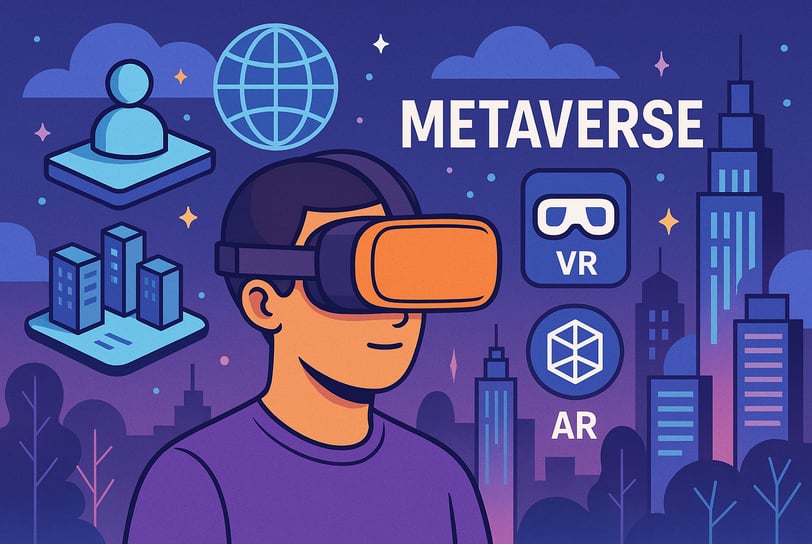Metaverse and Virtual/Augmented Reality: The Immersive Digital Revolution
In recent years, the concept of the metaverse and Virtual Reality (VR) and Augmented Reality (AR) technologies have gained great prominence. From immersive games to applications in the corporate world, these innovations are shaping how we interact with the digital environment. But how did they originate? What are their impacts and dangers? Let's explore these topics in depth.
3/16/20252 min read


Origins and Evolution
The Birth of the Concept
The term "metaverse" was popularized in 1992 by author Neal Stephenson in the novel Snow Crash, where he described a three-dimensional virtual world accessed through avatars. However, the idea of interactive virtual worlds began to materialize earlier, with the emergence of Virtual Reality in the 1960s.
Development of Virtual Reality (VR)
The first documented VR experience was the Sensorama (1956), a multisensory simulator created by Morton Heilig. In the 1980s and 90s, the technology gained popularity with the first VR headsets, such as Nintendo’s Virtual Boy. Today, devices like Oculus Quest, HTC Vive, and PlayStation VR offer increasingly realistic experiences.
The Rise of Augmented Reality (AR)
Unlike VR, which creates an isolated virtual environment, AR overlays digital elements onto the real world. A major milestone was the launch of Google Glass in 2013. In 2016, Pokémon GO popularized AR by allowing players to capture virtual creatures in the physical world.
Launched Metaverses: Successes and Failures
Successful Metaverses
Second Life: Launched in 2003, it allowed the creation of avatars and social interaction in a persistent digital world. It still has an active community today.
Decentraland: Based on blockchain, it enables the buying and selling of virtual land as NFTs.
Roblox: Although focused on a younger audience, it functions as an environment where users create and interact with digital experiences.
Fortnite: Beyond its game mode, it has become a social space for virtual events and live concerts.
Failed Metaverses
Google Lively: Launched in 2008, it was shut down the same year due to low adoption and lack of innovation compared to competitors.
Meta Horizon Worlds: Created by Meta (Facebook), it has yet to gain the expected adoption, with criticism regarding simplistic graphics and lack of engaging features.
Sansar: Developed by the creators of Second Life, it promised an immersive VR experience but failed to attract a solid user base due to its complexity and lack of interest from large communities.
Technological and Ethical Challenges
Technological Challenges
Latency and Connectivity: Metaverses require high-speed internet for immersive experiences without lag.
Accessible Hardware: VR headsets are still expensive, and not everyone has access to powerful devices to run high-quality virtual environments.
Interoperability: There is still no unified standard for different metaverses to connect with each other.
Ethical Challenges
Privacy and Data Security: Since metaverses collect biometric and behavioral data, there are risks of leaks and misuse.
Content and Behavior Regulation: Virtual crimes, such as harassment and financial scams, are already a problem and lack specific laws.
Psychological Effects: Excessive use of the metaverse can lead to digital addiction, mental health impacts, and difficulties in distinguishing between real and virtual experiences.
Conclusion
The metaverse and VR/AR technologies are just beginning to demonstrate their potential. While challenges remain, these innovations are expected to become increasingly present in our lives, impacting everything from entertainment to work and education.
Explore
Discover diverse topics in one convenient hub.
Connect
Learn
contact@mindstormblog.com
© 2025. All rights reserved.


